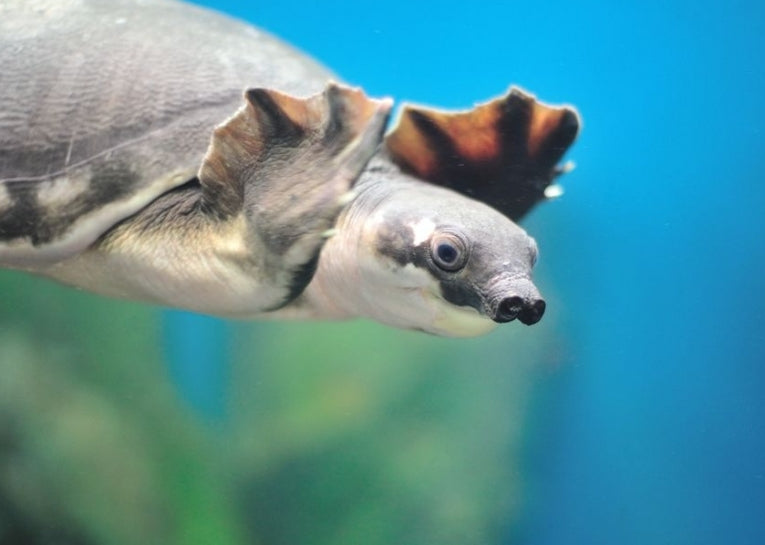700 pig-nosed turtles, of the species Carettochelys insculpta, are now added to the well-recognised trade that Indonesia currently has in endangered animals. An unbelievable 11,000 of them were actually found illegally-transported last year. It is understandable how their population has "nose-dived" by 50% in the 30 years from 1981 to 2011.
These quite beautiful swimmers are much in demand from freshwater exotic pet owners, as they are not bred easily in captivity and take up to 18 years to mature. Despite some evidence of social behaviour, adults are extremely aggressive to each other at times, too.
The officials at Soekarno-Hatta airport in Djakarta found the one month old nestlings on a plane from the east of Papua New Guinea. Southern Irian Jaya, presently a province within Indonesia, has also been found illegally exporting the species. Although no destination was discovered, the tiny chelonians are now on their way back to their habitat on the well-forested banks of southern Papuan watercourses such as the River Wania.
The pig nosed turtle is unique, with its facial feature adding further to its desirability for so-called enthusiasts. They eat a lot of fig leaves and fruit as well as an invertebrate diet which means they are classed as omnivorous.
The large flippers are very like those of a small marine turtle, but the species is related specifically, though distantly to, mud turtles and soft shell turtles. The species comes on land to breed but is otherwise very aquatic and hydrodynamic in its movement, requiring large water expanses to thrive and grow to its maximum 22cm length. Good luck to the babes in the Papuan woods.










